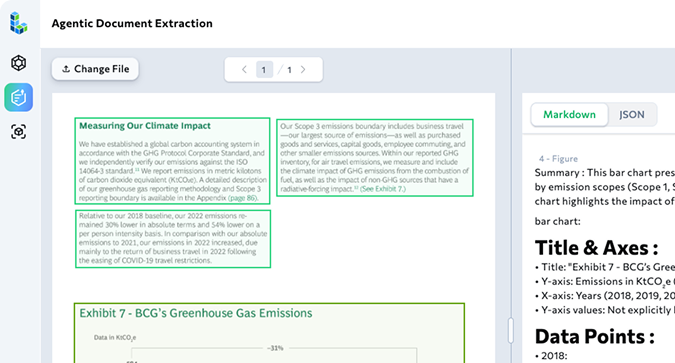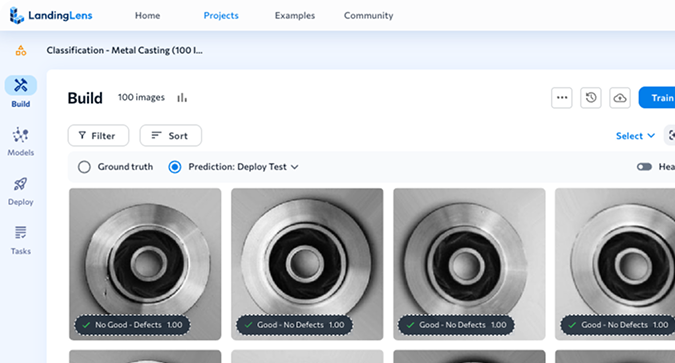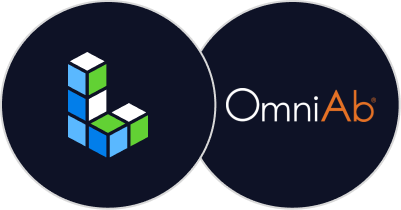The article below was contributed by Nathan Zahler, Ph.D., Senior Informatics Scientist at OmniAb, Inc.
Intro
In the rapidly evolving landscape of pharmaceutical research, OmniAb stands at the forefront, empowering industry partners with the most diverse antibody repertoires and state-of-the-art screening capability, highlighted by OmniAb’s Ion Channel Technologies. Ion channels are pivotal in a myriad of biological processes and therapeutic areas such as oncology, metabolic disease, pain, and neurological disorders. Since they are integral to cellular function, ion channels present significant opportunities for novel therapeutic drug discoveries.
Leveraging the powerful AI capabilities of LandingLens, OmniAb is revolutionizing the process of analyzing the complex, high-throughput electrophysiology (HTEP) data generated in these drug discovery studies. This data has traditionally demanded labor-intensive manual review by highly skilled electrophysiologists. By developing an AI model that mimics expert data evaluation, OmniAb has drastically cut down the time required for quality control from 30 minutes to just 5 minutes per experiment. The breakthrough of using machine learning in drug development not only accelerates drug discovery, but also ensures consistent, high-quality data analysis, driving forward the next generation of therapeutics with unprecedented efficiency.

Biological Processes Involve Rapid Changes
Ion channels are key components in a wide variety of biological processes that involve rapid changes in cells and have broad therapeutic applicability across multiple therapeutic areas, including oncology, metabolic disease, pain, neurological diseases, infectious diseases, and others. OmniAb’s differentiated core capabilities can provide novel reagent generation and proprietary assays that can also support antibody discovery programs and can be accessed by partners when pursuing ion channels and transporter targets, allowing the advancement of drug discovery against this challenging target class.

Challenges with the Complexity of High-Throughput Electrophysiology Data Sets and the Need for Manual Review
High-throughput electrophysiology (HTEP) is crucial for ion channel drug discovery and generates vast and complex data streams from experiments conducted in 384-well plates. Each plate, tested simultaneously across all wells, produces over 100,000 raw data points and hundreds of data plots, monitoring multiple experimental endpoints over time. Historically, ensuring high-quality data required meticulous manual review by Ph.D. electrophysiologists, taking up to 30 minutes per plate. With up to 20 experiments daily, the high volume necessitates a more efficient review process to keep pace with the demands of modern drug discovery.

Building on OmniAb’s Expertise and Experience with LandingLens
OmniAb’s extensive historical data, encompassing thousands of manually curated examples across a broad range of ion channel targets, serves as a robust foundation for training pass/fail quality control (QC) models. Leveraging our expertise with the LandingLens platform, we developed an AI model that replicates the precision of expert electrophysiologists within a few weeks. This AI model, designed to detect subtle changes in complex data, is intuitive enough for scientists to train for new drug targets. Utilizing a data visualization approach, multiple results can be plotted on a single image, facilitating the expansion of data analysis. Collaborating with the HTEP team, OmniAb’s data science group identified key metrics essential for QC analysis, enhancing the efficiency and accuracy of our AI-driven drug discovery efforts.
OmniAb’s team then converts data into chart images and uses LandingLens to rapidly prototype and iterate to develop a functional pass/fail classification model.
For the first production deployment, the model reproduced manual curation results with >95% precision and recall*.
- Precision: Also known as positive predictive value. It helps describe the purity of the positive detections relative to the ground truth.
- Recall: Also known as sensitivity. It helps describe the completeness of the positive predictions relative to the ground truth.
Accelerating Discovery by Reducing Time to Final Results
The OmniAb team integrated the LandingLens evaluation results into its custom QC dashboard, which demonstrated that the time for QC evaluation has been reduced from ≥30 minutes to 5 minutes per experiment.
The model allowed all team members to perform QC and move on to further analysis, reducing the analysis load on project leaders. As the results were consistent between individuals, the new process was rapidly adopted by the team. Current efforts are to expand this approach to additional ion channel drug discovery targets.
Learn more about OmniAb’s solution here and start building your Visual AI model for free at app.landing.ai.







